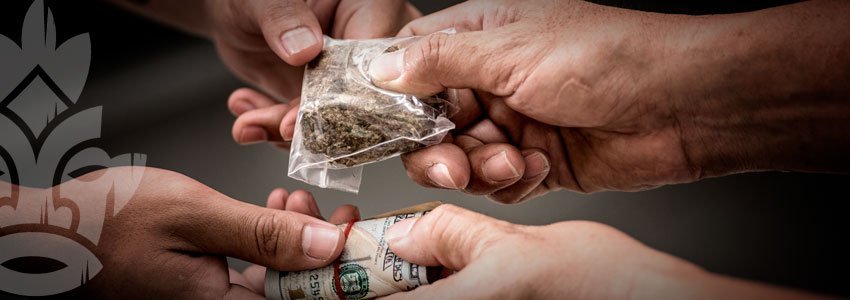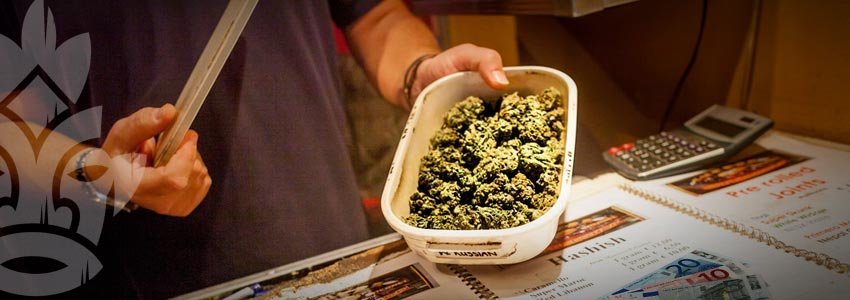Don't have an account?
Register NowYou have to add to cart at least 5 bottles or any program to make checkout.
- BlogThe Rise Of The Coffeeshops In Amsterdam
The Rise Of The Coffeeshops In Amsterdam
Published: April 28th, 2017
Categories:
Other subjects
An in-depth look at the history of the Amsterdam coffee shop
The connection between cannabis and Amsterdam's culture and has been solidified during the last few decades. Whether one is a cannabis enthusiast, casual smoker, or an anti-marijuana civilian, everybody is aware of Amsterdam's ganja status. Amsterdam is considered the ganja capital of Europe. The legendary High Times Cannabis Cup originates from this beautiful city, each year granting awards to the dankest seedbanks, breeders, and strains. Thousands of tourists travel to Amsterdam to enjoy its fascinating culture. Van Gogh Museum, Anne Frank’s house, the dankest of the dank, it’s all happening in this intriguing city. Exquisite buds are being consumed all around the city. Ganja enthusiasts can enter Amsterdam’s coffeeshops to purchase various marijuana strains, anything from indica, sativa, Kush, hash etc. The marijuana culture of Amsterdam has become a phenomenon. Let’s explore Amsterdam’s cannabis history, and how this spectacular city developed into Europe’s cannabis epicentre.

A FOCUS ON HARDER DRUGS
The history behind the modern cannabis culture of Amsterdam spans back to the 60’s. Psychoactive drugs were on the rise among heavier drugs such as heroin and opium. The American hippie culture of the 60’s had a great effect on the drug use in Netherlands, as well as the anti-drug laws dictated by the Dutch government. In the Netherlands, the legal stance regarding “street drugs” was relatively repressive.
Due to the increasing heroin addiction spreading across the country, the Dutch government decided to prioritise its eradication. In 1969 the Public Prosecutor's Office published specific guidelines to prioritize the law enforcement on hard drugs.
The Dutch used a term called “gedogen”, meaning that if something is officially illegal, it’s not necessarily enforced if the enforcement leads to negative results. Pursuing cannabis consumers was still supposed to be on police’s “agenda”, although it was understood that harder crimes must be prioritised. Enforcing the law on cannabis users and dealers would be a waste of resources in relation to cracking down on the heroin trade. Actually, cracking down on the cannabis trade would lead to an increase in heroin use, because of the "harder drug dealers", operating on the streets, offering cannabis among opium and heroin. That's the last thing that the government wanted.

THE SPLIT BETWEEN HARD AND SOFT DRUGS
In 1969, the Hulsman Committee proposed that drug problems should be treated as a public health issue. It was proposed that the anti-drug enforcement was to consider the specific drug’s effects on the individual and public health. There should be a separation between soft and hard drugs in this context. Subsequently, in 1972, a Baan Committee report established that a distinction has to be made between “unacceptable drugs” in regards to the person’s health and “other substances” such as cannabis. The committee stated that the benefits of criminalising cannabis operations did not match the positive effects created by these endeavours. This lead to the understanding that cannabis was “virtually” decriminalised.
THE BIRTH OF THE COFFEESHOP
At the beginning of the 70’s, ganja enthusiasts were gathering at music venues and specific locations to smoke dope. Because of the aforementioned avoidance of cracking down on cannabis use, Mellow Yellow, the first coffeeshop, (at those times called a “tea shop”), emerged in 1972. It was still illegal to operate this “tea shop”, although, due to the political climate, the government didn’t shut it down.
Mellow Yellow became so successful, that other coffee shops began to spring up. In 1975, The Bulldog and Rusland came to light. Today, The Bulldog is probably the most popular coffeeshop in Amsterdam. The Bulldog is placed in the red-light district, selling amazing weed to its devoted customers. They developed house rules, which minimised the noise and kept the weed operations “low key”. As long as they followed these rules, the government, wouldn’t shut down their cannabis endeavours.

In 1976 the Opium Act was revised, making a clear distinction between “substances posing great risks to the health of the individual” and “cannabis products”. This revision solidified the guidelines set in 1969. The Ministry of Health took over the “drug problem” aspect. Instead of criminalising users, health treatments would be of imperative importance.
In the 80’s, coffeeshops were on the rise. In 1991 the specific regulations for coffeeshops were created, and enacted in 1994. To summarise the regulations, the coffeeshops couldn’t sell or hold hard drugs on the premises, minimum signposting and marketing was allowed, avoiding disturbances such as noise, littering etc., no sales to underage customers, and the maximum transaction size of 30g was allowed.
Originally, the "allowance" of the cannabis trade was meant to help eradicate the heroin epidemic, which caused great health issues among other unpleasantries. However, the heroin epidemic had become very manageable. Therefore, the government started to shift focus onto the cannabis trade. In 1995, the government published an official policy titled “Continuity and Change”. This policy still recognised the difference between hard drugs and cannabis, although the coffeeshops wouldn't have the same freedom as they had previously.

Now, because the Dutch cities were making hundreds of millions of Euros from coffeeshops, prohibiting and overburdening coffeeshops would lead to significant financial issues and an increase in "street drugs sales". As such, the government was hesitant to clamp down on weed. To meet a middle ground, in 2012 the government introduced the “weed pass” which would only allow registered locals to purchase goods from coffeeshops. Of course, the locals didn’t want their names registered in the system; they wanted to remain anonymous. The "weed pass" was abolished four years later in most cities except Maastricht and couple of smaller towns.
Today, one can easily go to Amsterdam and purchase some high-grade weed. Now that cannabis has become an important part of the Dutch economy, coffeeshops shall remain open into the foreseeable future. Ganja has become a part of the Amsterdam culture. Regulations regarding growing and transporting are still not written in stone; therefore, there’s still work to be done to fully legalise cannabis activities. However, things are now progressing in the right direction, so hopefully we will see weed continue to flourish among the canals of this historic city.





